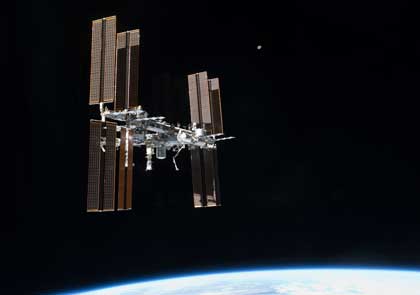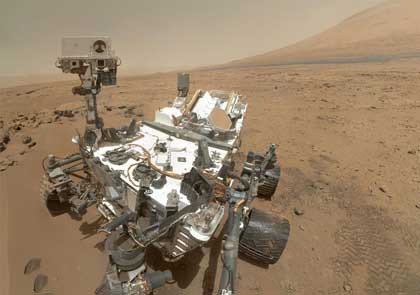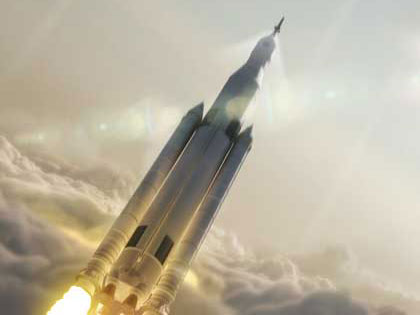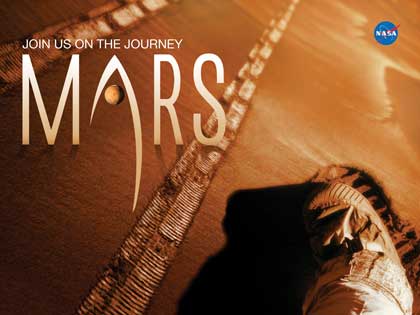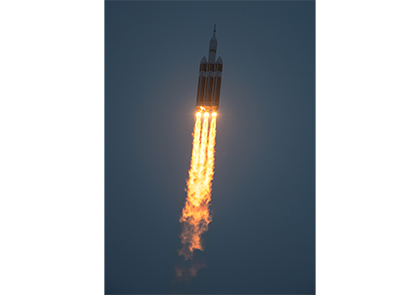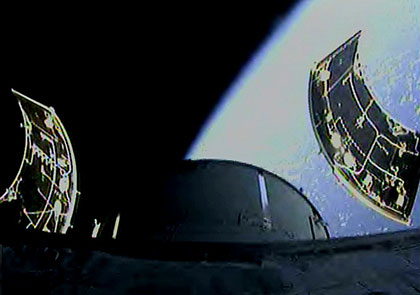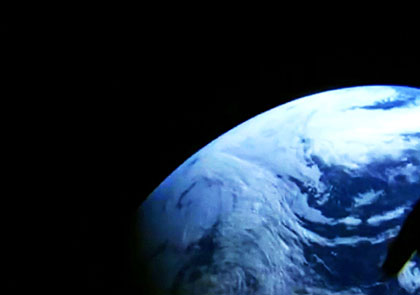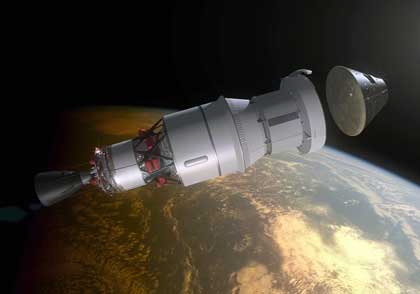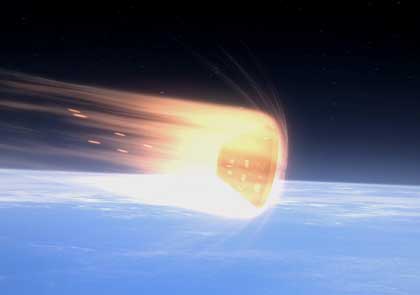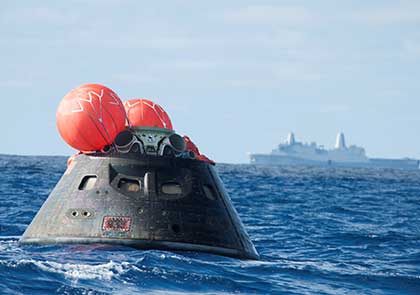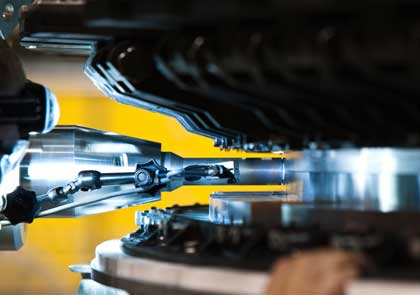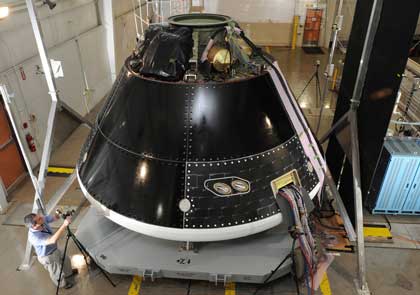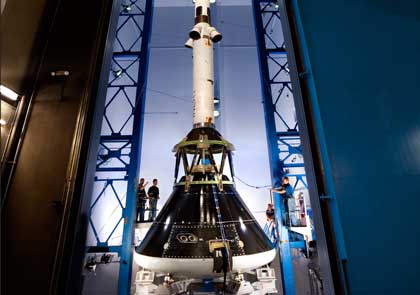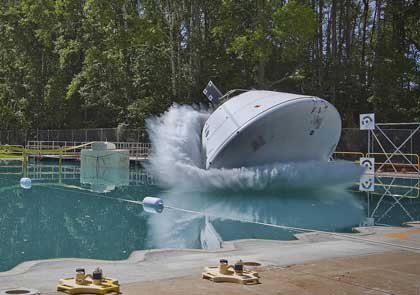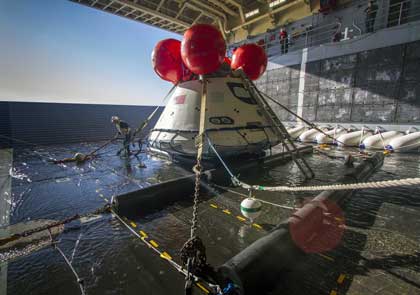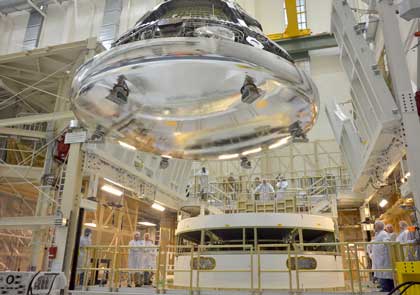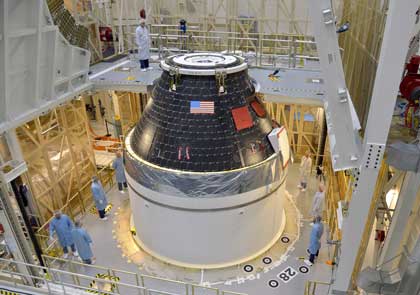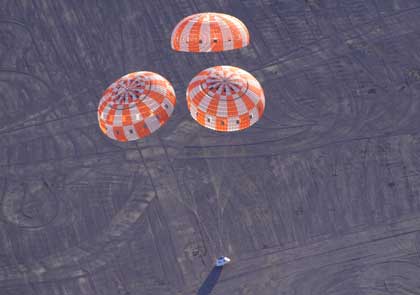What is Orion?
Orion is NASA’s new spacecraft, built to take humans farther into space than they’ve ever gone before. It will carry the crew to space, provide emergency abort capability, sustain the crew and provide a safe return to Earth. Having completed its first successful flight test in December 2014, Orion's next milestone will be a flight beyond the orbit of the moon.
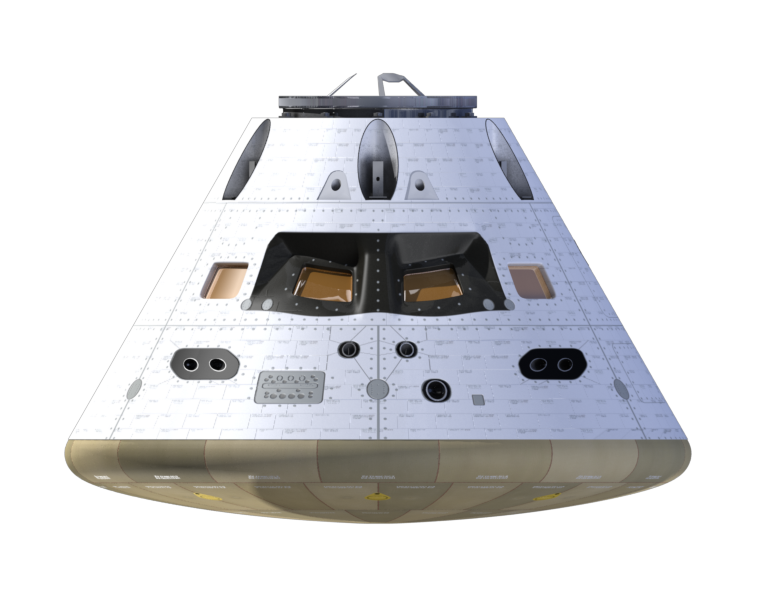
Flight Tested
first launch
On Dec. 5, 2014, Orion launched atop a Delta IV Heavy rocket from Cape Canaveral Air Force Station's Space Launch Complex 37.
Orion Flight Test
Loaded with almost 1,200 sensors, Orion completed a two-orbit, 4.5-hour flight to test many of the systems most critical to safety before it carries astronauts.
In the future
Orion will launch on NASA’s new heavy-lift rocket, the Space Launch System. More powerful than any other rocket ever built, SLS will be capable of sending humans to an asteroid and eventually to Mars.
Building on History
NASA is using new technology and lessons learned from earlier missions to build the new spacecraft. Orion will carry up to six astronauts compared with Apollo's three, and a new version of the Apollo heat shield will keep the astronauts safe as the crew module re-enters Earth's atmosphere when it returns from deep space.

Orion will use more modern technology in many other areas, such as computers, electronics, life support and propulsion.
Orion builds on the Space Shuttle design
Space Shuttle Technology
Orion's 970 outer tiles are made of the same material as the tiles that protected the shuttle.
Service Module
The European service module on Orion's second flight will use refurbished engines from the shuttle program.
Crew Seats
The crew seats that will fly on future missions will incorporate advances from the shuttle program to reduce mass but still protect the crew.
